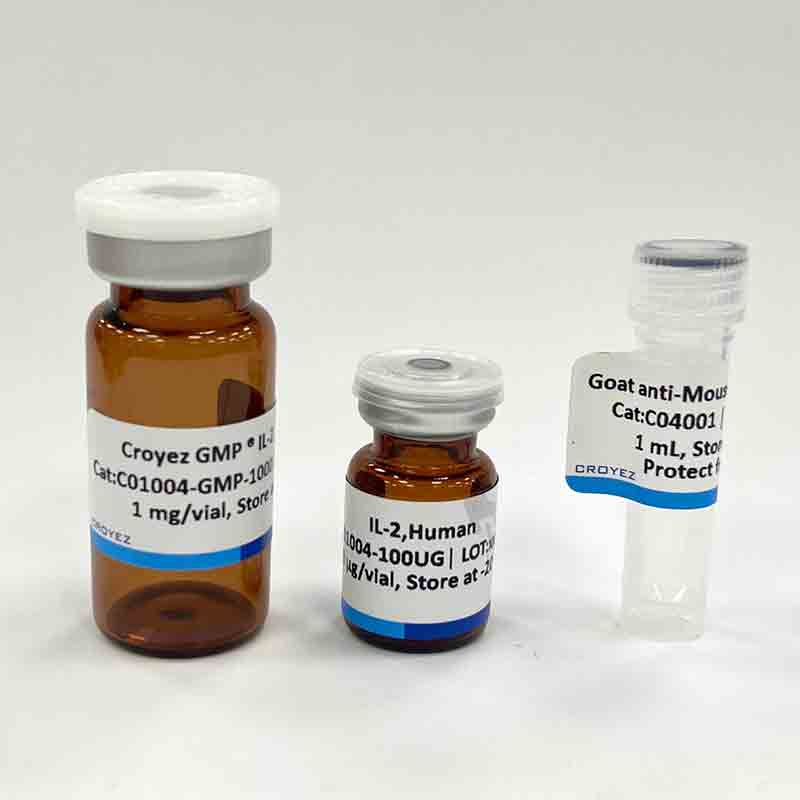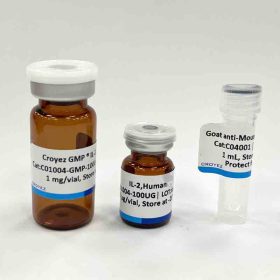CXCL3 is an ELR CXC chemokine. Its structural and functional characteristics are similarto GRO1 (CXCL1), GRO2 (CXCL2), and interleukin-8 (CXCL8). CXC chemokines is critical in the phase I inflammation, in which the PMN cells are rapidly chemoattracted. In the next phase of inflammation, the CC chemokines (MCPs) attract different cell subpopulations such as T cells, monocytes, basophils, and eosinophils. MMP12, primarily released by macrophages, can modulate the activity of ELR-CXC chemokines and cleavage human CXCL1, CXCL2 and CXCL3 within the ELR sequence at Glu6-Leu7.
Sequence:
ASVVTELRCQCLQTLQGIHLKNIQSVNVRSPGPHCAQTEVIATLKNGKKACLNPASPMVQKIIEKILNKGSTN with polyhistidine tag at the N-terminus
Source:
Escherichia coli
Endotoxin Test:
<0.1 EU per 1 μg of the protein by the LAL method.
Activity:
Measure by its ability to chemoattract BaF3 cells transfected with human CXCR2. The ED50 for this effect is <2 ng/mL.
Purity:
>98% as determined by SDS-PAGE. Ni-NTA chromatography
Formulation:
The protein was lyophilized from a solution containing 1X PBS, pH 7.4.
Reconstitution:
It is recommended to reconstitute the lyophilized protein in sterile H2O to a concentration not less than 100 μg/mL and incubate the stock solution for at least 20 min to ensure sufficient re-dissolved.
Storage:
Lyophilized protein should be stored at -20°C. Upon reconstitution, protein aliquots should be stored at -20°C or -80°C.
Note:
Please use within one month after protein reconstitution.





